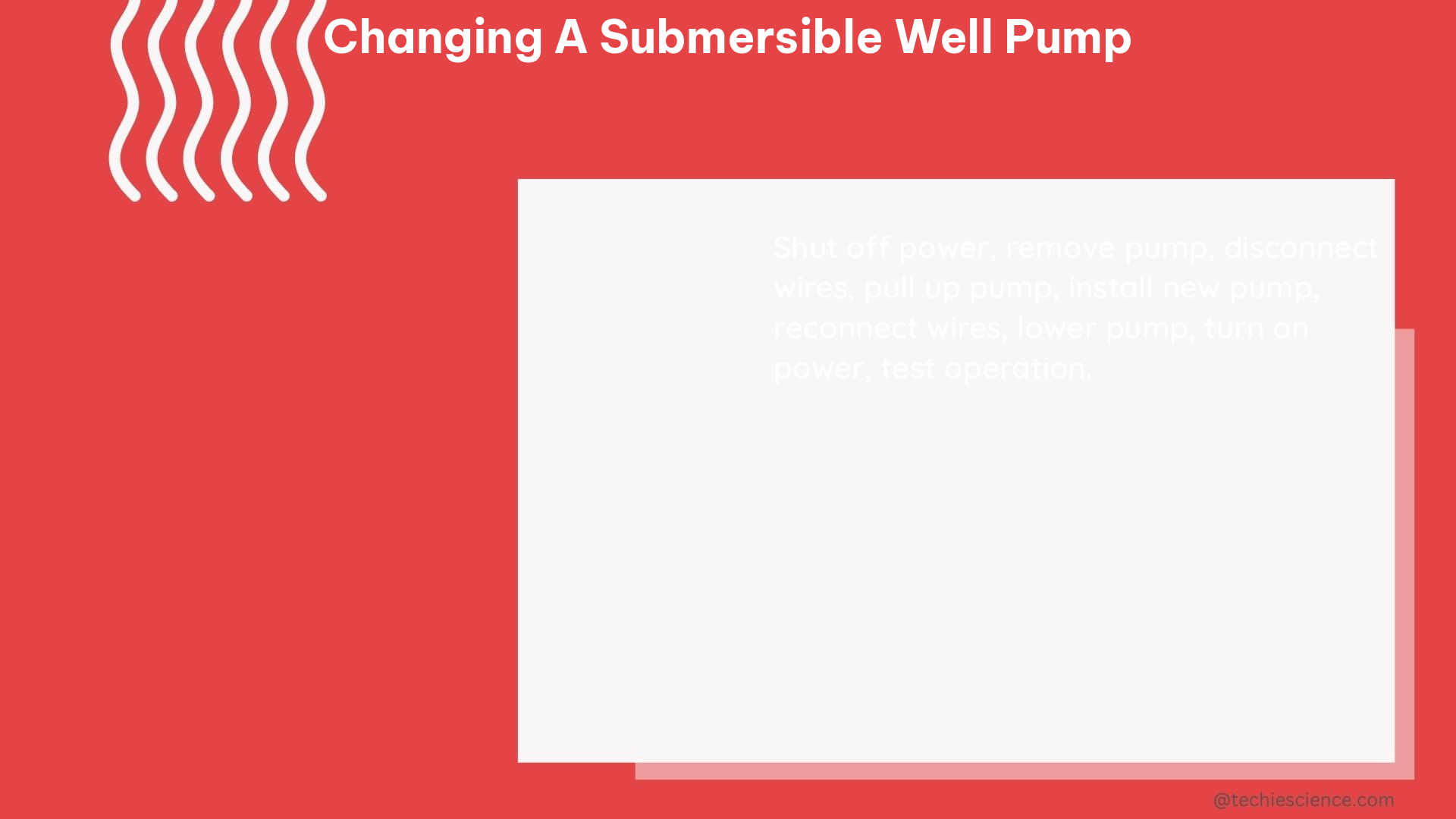Changing a submersible well pump is a complex task that requires precise measurements, calculations, and technical specifications. This comprehensive guide will walk you through the key data points and specifications to consider when replacing your submersible well pump, ensuring a successful and efficient installation.
Well Depth and Pump Selection
The depth of your well is a crucial factor in selecting the right pump. Generally, a 1.5 HP Red Jacket pump is suitable for wells up to 120 feet deep, while a 1 HP pump is sufficient for wells up to 90 feet deep. However, it’s essential to measure the exact depth of your well to ensure you choose the appropriate pump size.
| Well Depth | Recommended Pump Size |
|---|---|
| Up to 90 feet | 1 HP |
| Up to 120 feet | 1.5 HP |
Pump Outlet Position and Wellhead Level

The position of the pump outlet in the well, known as the Pump Outlet Position (mNN), is a critical measurement. This value, along with the Wellhead Level Position (mNN), will help you determine the appropriate pump size and ensure proper installation.
Pressure Measurement and Groundwater Level
The Pressure Measurement Point Position (mNN) and the Groundwater Level During Operation (mNN) are also essential data points. These measurements will help you calculate the pressure losses in the system and ensure the pump is operating at the correct pressure.
Pressure Losses and Pump Outlet Pressure
Pressure losses in the system, denoted as J(Q), depend on the flow rate (Q). Knowing the pressure losses will allow you to calculate the Pressure at Pump Outlet (Ges), which is the pressure at the pump outlet.
Effective Power and Energy Efficiency
The Effective Power at Measurement Point (el) is the power output at the measurement point in the system. This value, along with the Power Consumption (kWh/a) and the Annual Water Volume (m³/a), can be used to calculate the energy efficiency of the pump.
| Metric | Value |
|---|---|
| Effective Power at Measurement Point (el) | ___ kW |
| Power Consumption (kWh/a) | ___ kWh |
| Annual Water Volume (m³/a) | ___ m³ |
| Energy Efficiency | ___ % |
Pressure Tank and Torque Arrestor
The size of the pressure tank is crucial for the efficient operation of the pump. A pressure tank that is too small can overwork the pump, leading to failure. Additionally, a torque arrestor may be needed to protect the pump and the well from damage due to the torque produced by the pump.
Wiring and Connections
The wire connections between the pump and the power source must be secure and waterproof. Heat shrink tubing and electrical tape can be used to ensure a secure connection and prevent water intrusion.
Manufacturer Instructions and Regulations
It’s essential to follow the manufacturer’s instructions and local regulations when changing a submersible well pump. Proper maintenance and regular inspections can also help extend the lifespan of the pump and ensure its efficient operation.
Conclusion
Changing a submersible well pump requires a thorough understanding of the technical specifications and measurements involved. By following this comprehensive guide, you can ensure a successful and efficient installation of your new pump, providing a reliable water source for your home or business.
References
- Terry Love Plumbing & Remodel DIY & Professional Forum
- Evaluation of Submersible Pump Performance in a Water Supply System
- Diagnose and Replace a Submersible Well Pump
- Sizing a Water Well Submersible Pump
- Developing Measurable Goals

The lambdageeks.com Core SME Team is a group of experienced subject matter experts from diverse scientific and technical fields including Physics, Chemistry, Technology,Electronics & Electrical Engineering, Automotive, Mechanical Engineering. Our team collaborates to create high-quality, well-researched articles on a wide range of science and technology topics for the lambdageeks.com website.
All Our Senior SME are having more than 7 Years of experience in the respective fields . They are either Working Industry Professionals or assocaited With different Universities. Refer Our Authors Page to get to know About our Core SMEs.